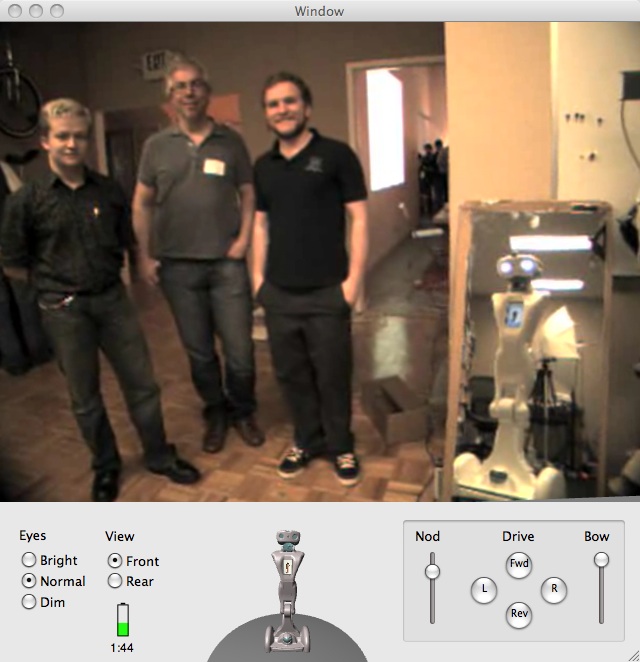In December of 1998 my wife Nancy and I moved from a cozy little townhouse into a new 2500 square foot house. No one outside of Stanford had never heard of Google. You could still take large bottles of shampoo onto airplanes in your carry-ons. Al Gore was still Vice President. And I was looking forward (or maybe "resigned" would be a more apt description) to a long career at JPL.
Now that we had some extra space, my wife wanted to get a dog. She didn't really want a dog, she wanted a cat. But I was allergic to cats, so a dog was the next best thing.
I didn't really want any furry creatures in the house besides me. We had had a cat when I was a kid, and once the initial charm wore off, taking care of it became a horrible chore. Emptying the litter box was the worst. I learned the hard way that I get terribly squeamish about the smelly realities of biology. But my wife promised to do all the dirty work and batted her eyelashes at me and I succumbed.
We made a list of the characteristics we wanted in our dog: He had to be a rescue animal. Neither one of us wanted to go to a breeder. He couldn't be too big or too small. We wanted a dog that we could take hiking with us, but not one that we couldn't pick up and carry if we had to. He had to have short hair. He had to be housebroken, and preferably already trained. No barkers, no diggers, no chewers.
We spent a year looking for the perfect dog. We must have visited every pound and rescue organization in Los Angeles. We researched all the breeds. We looked at akitas and malamutes, shepherds and sheepdogs. (Well, actually we didn't look at sheepdogs. Long hair, and all. But I couldn't pass up the alliteration.) We found out that there's a reason that all these animals end up in the pound. If someone has the perfect dog, they tend to keep them.
I finally threw up my hands in despair and agreed to get a cat and deal with taking antihistamines for the rest of my life. So we went to the Pasadena Humane Society and picked out a beautiful orange manx whom we ultimately named Purrcy. While Nancy was in the office filling out the paperwork I happened to notice a lady in the parking lot with a nice looking brown dog. To kill time I decided to go say hello. It turned out the dog wasn't her's, it was a stray that she'd found and was bringing in to the pound.
He was medium-sized.
He had short hair.
He looked at me with sad puppy eyes.
I said, "Hi boy, can you sit?"
He sat.
I said, "Can you shake?"
He held up his paw.
He never made it into the pound. We bought a leash at the humane society's store, put him in the back seat of the car and brought him home. Purrcy arrived a few days later, and after a few skirmishes the two negotiated a peace settlement that lasted for the next nine years. And I, who didn't want any animals at all, suddenly found myself with both a dog and a cat.
Nancy wanted to name him Hobo and I wanted to name him Mojo. We compromised and called him Mobo. In retrospect we should have named him Pogo because he bounced. He bounced when we fed him. He bounced when he walked. His floppy ears would wiggle up and down like Dopey and it would make me happy just to watch them as he trotted along. He was just a bouncy dog, and quite the hiker. We'd take him up into the Angeles National Forest and let him run off leash so he could chase chipmunks and squirrels and the occasional deer. (I don't know what he would have done if he ever managed to catch one.) I lost count of the number of times he vanished (which always freaked Nancy out) only to show up half a mile down the trail, panting furiously, with this huge doggy grin on his face saying, "What the heck took you guys so long to get here?"
But then, as all dogs do, he got old. His legs got weaker. We took him to the vet and learned that one of his hind legs was completely missing the ball part of its ball-and-socket joint. It was amazing that he could even walk, let alone run up and down mountains. But somehow he managed. We started giving him pain pills and that helped for a while. Then he had knee surgery. Then he started making these horrible hacking noises. This time it was a lung tumor, which turned out to be inoperable. That was two years ago.
Today, Mobo finally succumbed. He'd been in a pretty steady declined for a while. His legs were so weak that even standing was becoming a struggle. His breathing was getting raspy and labored. He was on four different kinds of medications. And then he had one horrible no good terrible very bad night and we decided it was time to say goodbye.
I never in a million years dreamed that I could become so attached to an animal. Taking him to the emergency clinic to be euthanized was the hardest thing I've ever done. (I've lived a pretty easy life.) I don't think I've felt so much emotional pain since I was a teenager and my first girlfriend dumped me. His passing has left a dog-shaped hole in my soul. I miss him more than I ever imagined that I could.
No more hikes.

No more sad puppy eyes.

I don't know how anyone who has been through an experience like this can't find at least a little bit of sympathy for people who turn to God for emotional solace. I am a non-believer to the core, and yet the temptation to ease the pain by saying, "You're going to a better place where you can chase squirrels to your heart's content" was overwhelming. And despite the fact that part of me knew it wasn't true, saying it (and I confess I did say it) actually helped. Imagine how much more effective it might have been if I actually believed it. And imagine how much more necessary it might have been if it had been a dying child I was dealing with instead of a dog. Even now I can't even begin to imagine what that must be like.
Mobo, I will miss you. You made a dog person out of me, which I didn't think was possible. Wherever you are now, I hope there are squirrels to chase.



